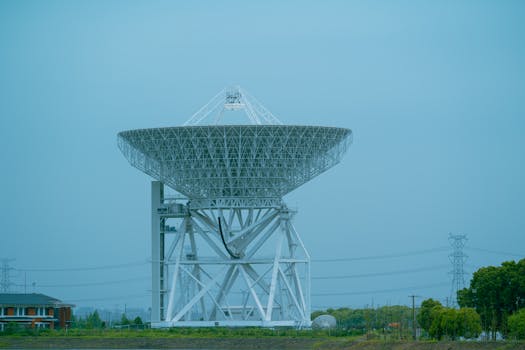Orbiting Innovations: Key Updates in Satellite Telecommunications Technology
The satellite telecommunications industry is witnessing significant advancements in technology, driving innovations in orbiting solutions. This article explores the key updates in satellite telecommunications technology, including improved connectivity, advanced satellite designs, and enhanced signal processing.

Orbiting Innovations: Key Updates in Satellite Telecommunications Technology
Focus Keyword: Satellite Telecommunications
Satellite Telecommunications has revolutionized the way we communicate, enabling global connectivity and facilitating the exchange of information across the globe. The rapid evolution of satellite telecommunications technology has led to significant improvements in orbiting innovations, driving the industry forward. In this article, we will delve into the key updates in satellite telecommunications technology, exploring the latest advancements and their impact on the industry.
The satellite telecommunications industry has experienced tremendous growth in recent years, driven by the increasing demand for global connectivity and the need for reliable communication services. The development of new satellite constellations, such as OneWeb and Starlink, has enabled the provision of high-speed internet services to remote and underserved communities, bridging the digital divide. Furthermore, the use of advanced satellite designs, such as high-throughput satellites (HTS) and very high-throughput satellites (VHTS), has significantly improved the efficiency and capacity of satellite communications.
One of the significant updates in satellite telecommunications technology is the development of advanced signal processing techniques. The use of digital signal processing (DSP) and software-defined radios (SDR) has enabled the efficient processing of satellite signals, improving the overall performance and capacity of satellite communications. Additionally, the implementation of advanced modulation techniques, such as quadrature amplitude modulation (QAM) and amplitude-phase shift keying (APSK), has enhanced the spectral efficiency of satellite transmissions.
Improved Connectivity and Advanced Satellite Designs
The development of new satellite constellations has enabled the provision of high-speed internet services to remote and underserved communities, facilitating global connectivity. The use of advanced satellite designs, such as HTS and VHTS, has significantly improved the efficiency and capacity of satellite communications. These satellites are equipped with multiple spot beams, which enable the efficient use of bandwidth and improve the overall performance of satellite communications. Furthermore, the use of advanced antenna technologies, such as phased array antennas and active electronically scanned arrays (AESA), has enhanced the flexibility and capacity of satellite communications.
The development of 5G satellite communications is another significant update in satellite telecommunications technology. The integration of 5G networks with satellite communications has enabled the provision of high-speed and low-latency communication services, facilitating the growth of emerging technologies such as the Internet of Things (IoT) and autonomous vehicles. The use of advanced satellite designs and signal processing techniques has enabled the efficient support of 5G services, including enhanced mobile broadband (eMBB), ultra-reliable low-latency communications (URLLC), and massive machine-type communications (mMTC).
Enhanced Signal Processing and Security
The development of advanced signal processing techniques has significantly improved the performance and capacity of satellite communications. The use of DSP and SDR has enabled the efficient processing of satellite signals, improving the overall performance and capacity of satellite communications. Additionally, the implementation of advanced modulation techniques, such as QAM and APSK, has enhanced the spectral efficiency of satellite transmissions.
The security of satellite communications is another critical aspect of satellite telecommunications technology. The use of advanced encryption techniques, such as secure sockets layer/transport layer security (SSL/TLS) and internet protocol security (IPSec), has enabled the secure transmission of data over satellite communications. Furthermore, the implementation of advanced access control and authentication mechanisms has ensured the secure access to satellite communications, preventing unauthorized access and protecting sensitive information.
Conclusion
In conclusion, the satellite telecommunications industry is witnessing significant advancements in technology, driving innovations in orbiting solutions. The development of new satellite constellations, advanced satellite designs, and enhanced signal processing techniques has improved the efficiency and capacity of satellite communications. The integration of 5G networks with satellite communications has enabled the provision of high-speed and low-latency communication services, facilitating the growth of emerging technologies. As the satellite telecommunications industry continues to evolve, we can expect to see further innovations in orbiting solutions, driving the industry forward and enabling global connectivity.
